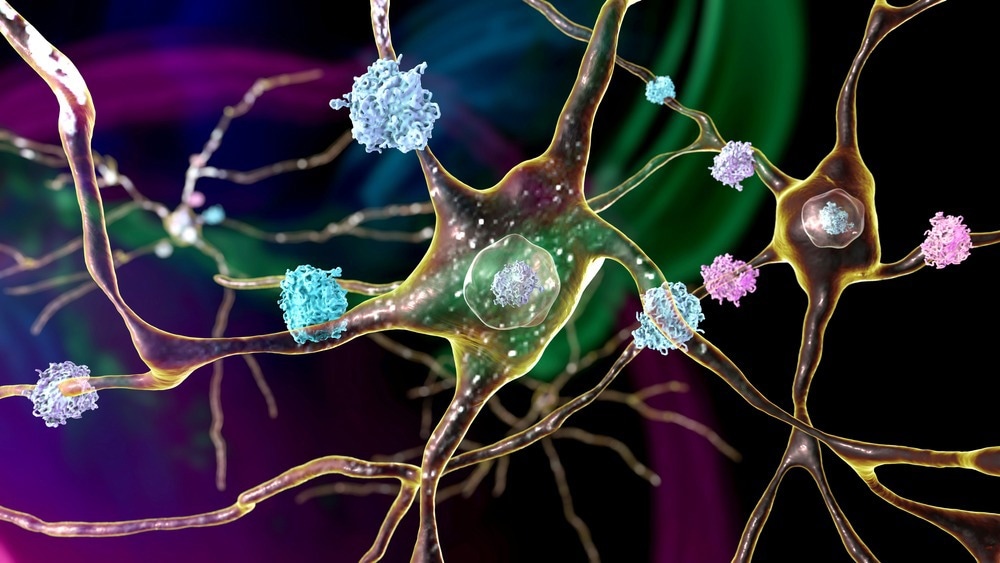What are the Challenges in Developing New Treatments for Huntington's Disease?
Challenge 1: Lack of prominent cellular and molecular pathways for pharmaceutical targets
Challenge 2: lack of proper animal models to evaluate therapeutic approaches
Challenge 3: Difficulties associated with the development of clinical trials
Potential solutions
References
Further reading
Huntington's disease (HD) is a neurodegenerative genetic disorder prevalent in around 5 to 10 per 100,000 individuals in North America and Western Europe. This disease is caused by the expansion of polyglutamine (polyQ, CAG) repeated in the first exon of the protein huntingtin (Htt). Although HD was identified approximately 20 years ago, scientists face many challenges in developing effective treatments for the disease. This article discusses the challenges faced while developing new treatments for HD.

Image Credit: Sohel Parvez Haque/Shutterstock.com
Studies have shown that the age of disease onset is inversely proportional to the length of the CAG repeat. Typically, individuals infected with HD survive 15–20 years after the initial onset of symptoms. Common symptoms of this disease include abnormal movements, dementia, progressive cognitive impairment, and psychiatric disturbances. This disease can also lead to death.
 What is Huntington's Disease?
What is Huntington's Disease?Researchers have highlighted some of the challenges faced while identifying drug targets, which are essential for designing therapeutics, and other difficulties encountered while developing novel treatments for HD. These are discussed below.
Challenge 1: Lack of prominent cellular and molecular pathways for pharmaceutical targets
Although several molecular and cellular pathways associated with HD have been documented, there has been a lack of identifying key pathways that play a significant role in disease pathology. Some studies have reported that aggregation of polyQ and erroneously folded mutant huntingtin (mHtt) cause neurotoxicity. These studies have also reported the role of mHtt in mitochondrial dynamics; for instance, mHtt increases mitochondrial immobility in the neurons and causes dysregulation of mitochondrial bioenergetics.
Genomic analysis revealed the link between the incidence of HD and changes in the expression of many genes (e.g., mHtt regulates transcription). Therefore, it is important to determine a specific molecular pathway that plays an important role in HD pathology. Additionally, it is imperative to understand which processes must be blocked to prevent the occurrence of HD. Scientists also underscored the importance of understanding the role of wild-type huntingtin protein in disease prognosis.

Image Credit: Kateryna Kon/Shutterstock.com
Several studies have shown that wild-type Htt is a large multi-domain protein interacting directly or indirectly with multiple proteins. The lack of appropriate information about a specific molecular pathway that sufficiently induces HD-associated pathology presents substantial difficulties in formulating strategies to prevent HD or stall disease progression.
Challenge 2: lack of proper animal models to evaluate therapeutic approaches
The development of a proper transgenic model for HD is difficult because of the size of the mutated gene. Additionally, the variations in the number of polyQ repeat between patients and expression of mHtt-related pathology only in selected areas of the brain pose problems in developing a proper animal model to study HD. Researchers stated that it is difficult to recapitulate and determine the slow progression of the disease, cognitive pathologies, and age dependencies in animal models.
Although many models have been developed to study HD with N-terminal fragments and full-length mHtt, they vary substantially, as each mimics a particular symptom and rate of disease progression. This is because the expression of full-length and fragments of mHtt induces only some of the HD pathologies, which determines the type of animal model. Scientists have successfully designed animal models with sleep pattern abnormalities, cognitive and behavioral abnormalities, and limited lifespan associated with HD. Every model contains a different degree of regional or general neurodegeneration. As every model has some limitations, selecting the most suitable model for a particular HD study is difficult.
Challenge 3: Difficulties associated with the development of clinical trials
The challenges associated with developing clinical trials for HD are similar to those linked with clinical studies of other rare diseases. Some difficulties related to HD clinical trials include small sample sizes, geographical challenges for patients to enter trial sites, etc.

Image Credit: Gorodenkoff/Shutterstock.com
Furthermore, as the progression of the HD disease is prolonged with differential severity and progression rate, the clinical assessment of the disease is not suitably objective, quantitative, and robust. Due to the lack of surrogate markers, researchers fail to determine disease progression and therapeutic effectiveness over a short trial time
Potential solutions
Researchers have been addressing the above mention challenges to help develop an effective treatment for HD. Previous studies have shown that mHtt interacts with the mitochondrial fission machinery, especially dynamin-related protein 1 (Drp1).
Considering the aforementioned finding, researchers developed tools and protocols to examine the effect of over-expressed mitochondrial fission and abnormal mitochondrial dynamics in neurodegeneration. Recently, the same group of researchers studied if inhibition of excessive Drp1 activation could reduce the incidence of mHtt pathology.
Animal models showed that inhibitors of hyper-expressed Drp1 activation suppressed neural cell death and mHtt pathology. This finding was validated using six animal models; however, each model presented some limitations. Researchers stated that inhibition of excessive Drp1 expression by P110 had effectively rescued mHtt-induced mitochondrial fragmentation, restored mitochondrial functional defects, and reduced cellular death in multiple HD cell culture models derived from mice or patients. Although in vivo experiments support the use of Drp1 inhibitor or inhibitors for treating HD, more clinical trials are required to validate the result.
Scientists have conducted many rational studies and determined some biomarkers, including plasma creatine kinase (CK-BB isozyme), 8-hydroxy-2-deoxyguanosine (8-OH-2-dG), overexpression of H2AFY, related to HD. These biomarkers could help shorten the clinical trials in duration and cost and, therefore, accelerate the development of effective treatment for HD.
References
- Kwon, D. (2021) Failure of genetic therapies for Huntington’s devastates community. Nature, 593, 180. doi: https://doi.org/10.1038/d41586-021-01177-7
- Komatsu, H. (2021) Innovative Therapeutic Approaches for Huntington’s Disease: From Nucleic Acids to GPCR-Targeting Small Molecules. Frontier in Cellular Neuroscience. https://doi.org/10.3389/fncel.2021.785703
- Lax, M. and Papoutsi, M. (2021) Overcoming Imaging Challenges To Advance Huntington’s Disease Research. [Online] Available at: https://ixico.com/news-and-resources/blog/overcoming-imaging-challenges-to-advance-huntingtons-disease-research/
- Peritore, C. (2021) Recent Setbacks in Huntington’s Disease Therapy. [Online] Available at: https://www.criver.com/eureka/recent-setbacks-huntingtons-disease-therapy
- Dash, D. and Mestre, T.A. (2020) Therapeutic Update on Huntington’s Disease: Symptomatic Treatments and Emerging Disease-Modifying Therapies. Neurotherapeutics, 17, pp.1645–1659. https://doi.org/10.1007/s13311-020-00891-w
- Mochly-Rosen, D. et al. (2014). The challenge in translating basic research discoveries to treatment of Huntington disease. Rare Diseases, 31(2), e28637. doi: 10.4161/rdis.28637.
Further Reading
- All Huntington's Disease Content
- What is Huntington’s Disease?
- Huntington’s Disease Symptoms
- Huntington’s Disease Diagnosis
- Huntington’s Disease Genetics
Last Updated: Aug 11, 2022

Written by
Dr. Priyom Bose
Priyom holds a Ph.D. in Plant Biology and Biotechnology from the University of Madras, India. She is an active researcher and an experienced science writer. Priyom has also co-authored several original research articles that have been published in reputed peer-reviewed journals. She is also an avid reader and an amateur photographer.
Source: Read Full Article



